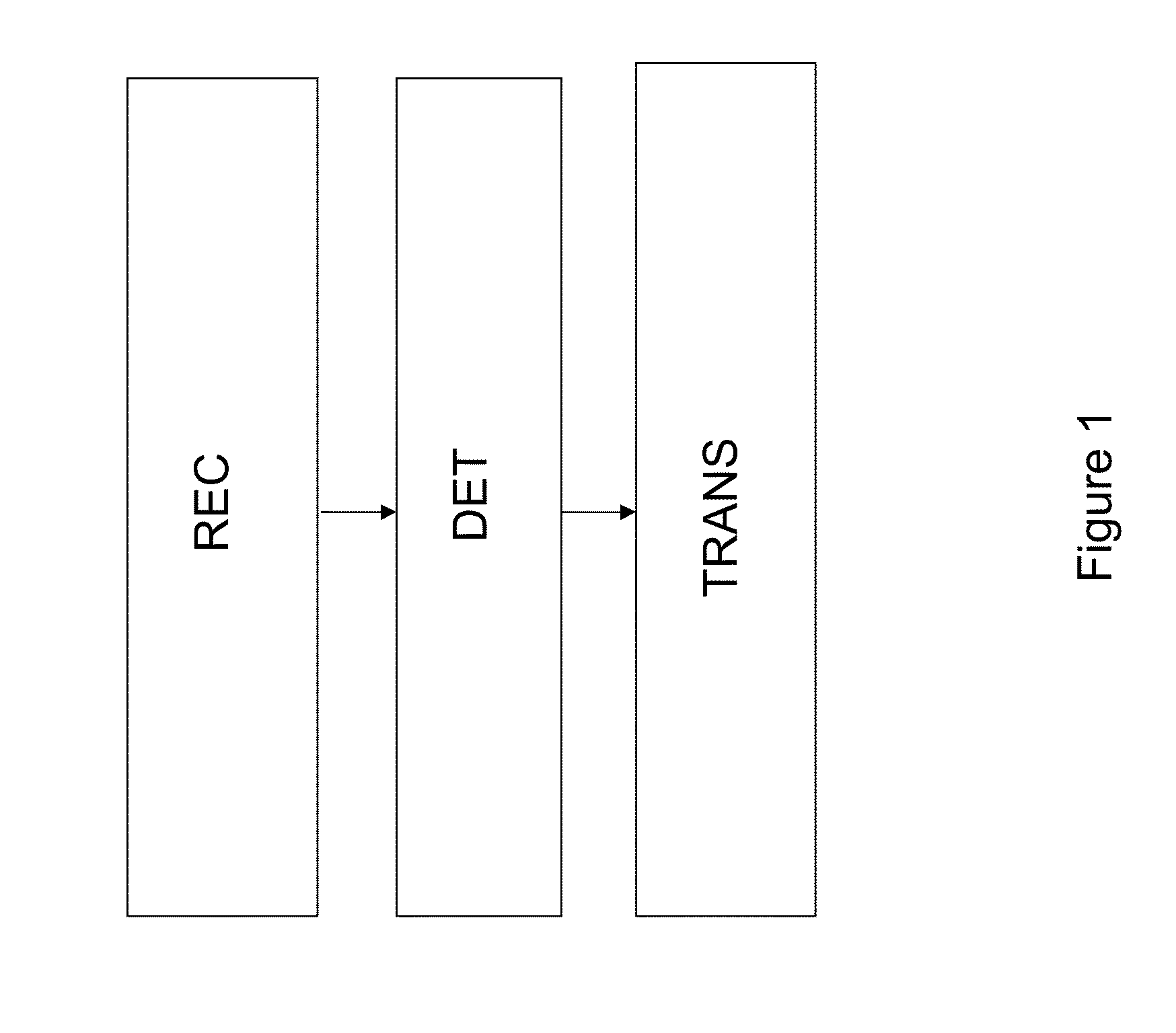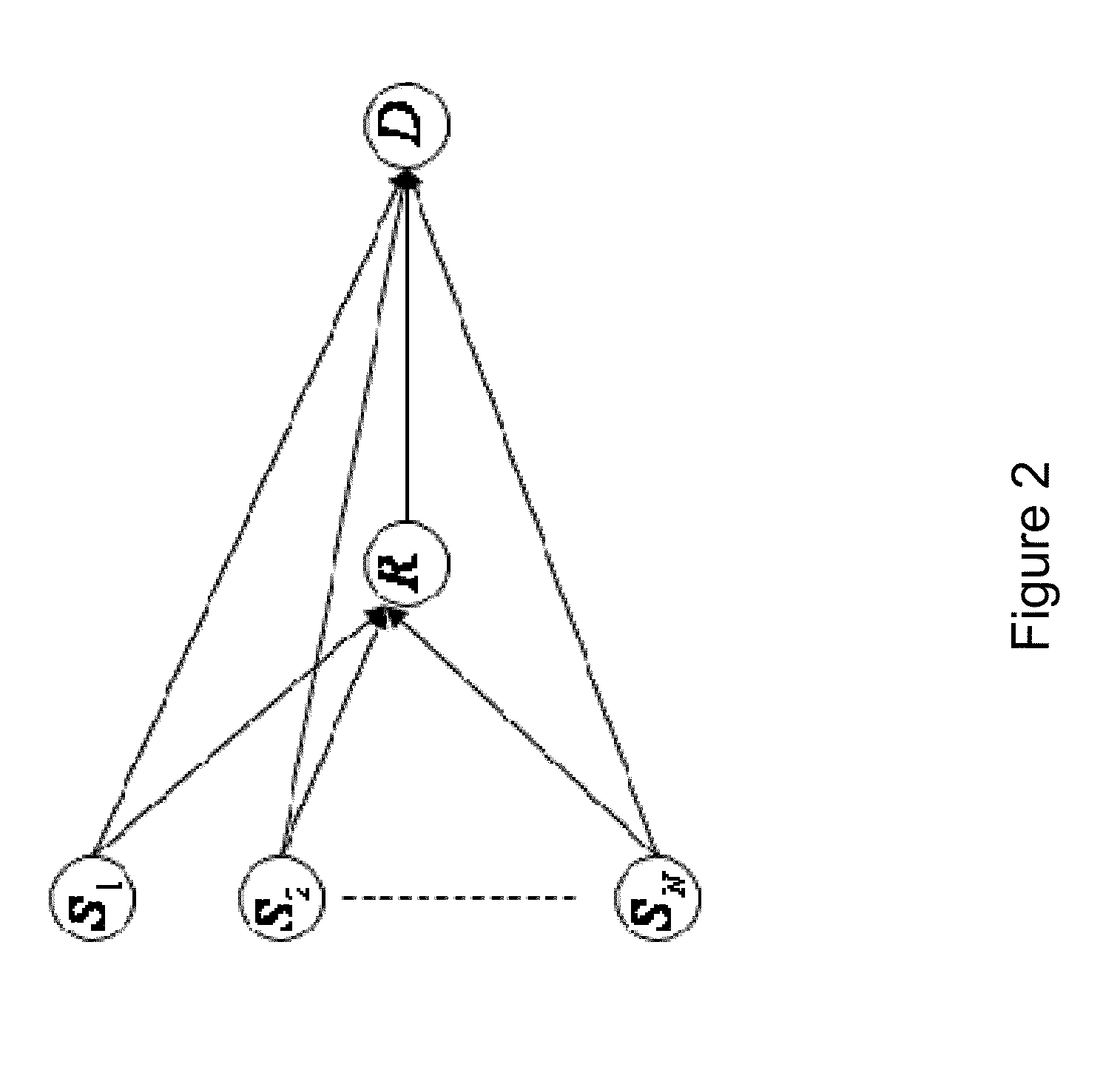Method and a Device for Relaying in a Communications Network
a communication network and relay technology, applied in the field of digital communications and network coding, can solve the problems of reducing the reception rate at the destination, affecting the reception rate of the destination, and propagating errors to the destination
- Summary
- Abstract
- Description
- Claims
- Application Information
AI Technical Summary
Benefits of technology
Problems solved by technology
Method used
Image
Examples
Embodiment Construction
[0063]FIG. 1 shows the method of an embodiment of the present invention in one implementation. The method comprises a reception step (written REC in FIG. 1) in which the relay R receives messages u1, u2, . . . , uN each associated with a respective source, a detection step (written DET in FIG. 1), in which the relay R detects errors in the messages; and a transmission step (written TRANS in FIG. 1) in which the relay (R) transmits a signal to the destination (D), which signal is representative of only those messages for which no error is detected. The representative signal is transmitted by the relay R to the destination D together with a check signal indicating which messages are represented in the representative signal.
[0064]FIG. 2 is an abstract model of communication between N nodes S1, S2, . . . , SN and the destination D with the help of a relay channel R. The communications system of an embodiment of the invention comprises at least the relay R and the destination D. By way o...
PUM
 Login to View More
Login to View More Abstract
Description
Claims
Application Information
 Login to View More
Login to View More - R&D
- Intellectual Property
- Life Sciences
- Materials
- Tech Scout
- Unparalleled Data Quality
- Higher Quality Content
- 60% Fewer Hallucinations
Browse by: Latest US Patents, China's latest patents, Technical Efficacy Thesaurus, Application Domain, Technology Topic, Popular Technical Reports.
© 2025 PatSnap. All rights reserved.Legal|Privacy policy|Modern Slavery Act Transparency Statement|Sitemap|About US| Contact US: help@patsnap.com



